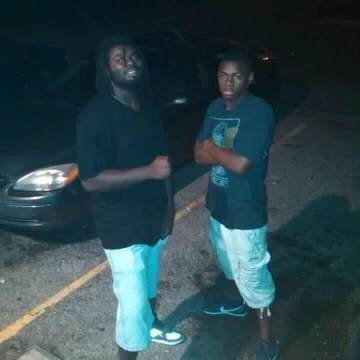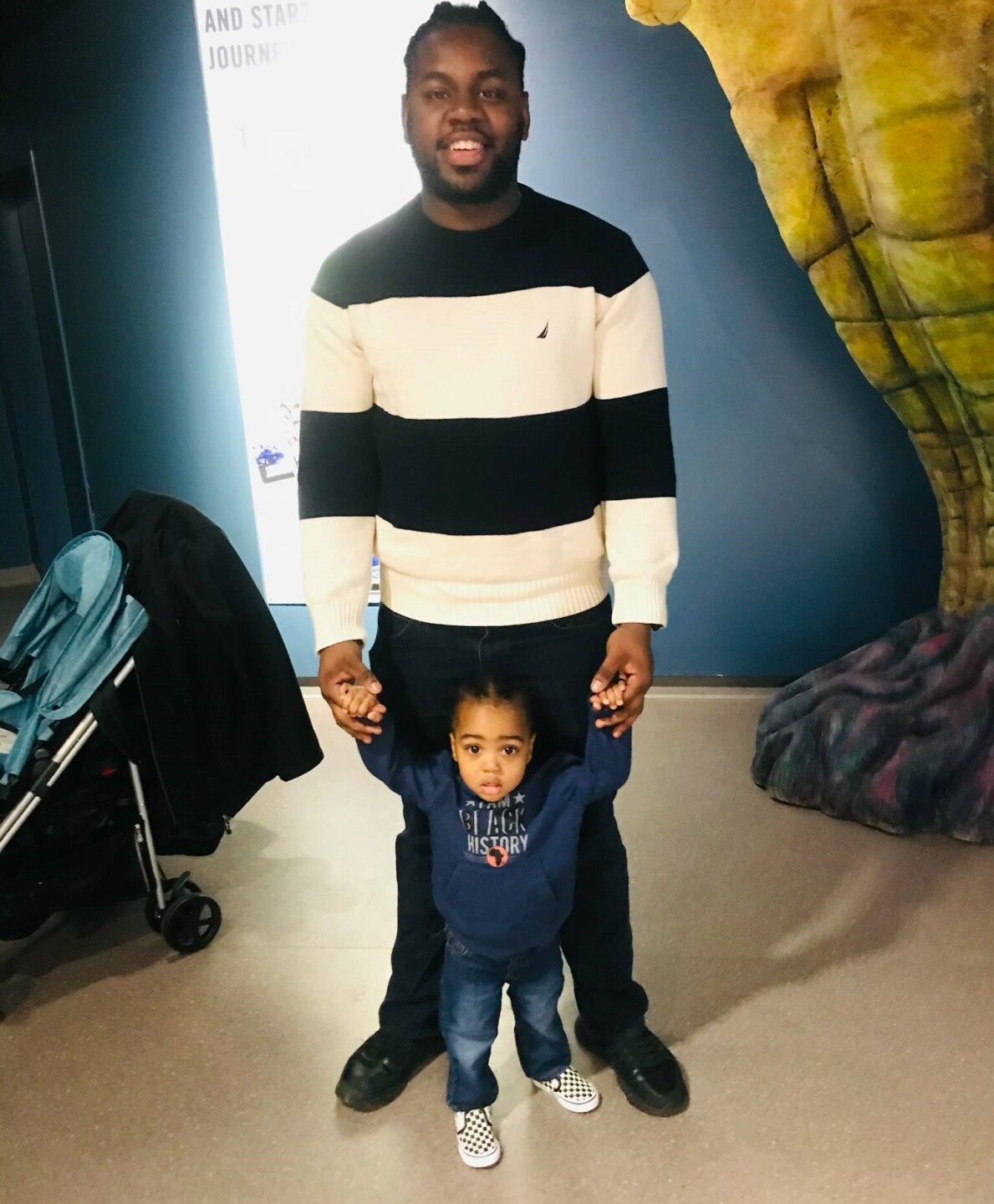CINCINNATI — Rodney Walker was 22 and facing homelessness for the second time in his young life.
He couldn’t stay with his mom in her small apartment any longer, but he didn’t have enough money to get a place of his own. He made some calls and moved to City Gospel Mission’s homeless shelter 10 days before Christmas in 2019.
“That’s the lowest I’ve ever been,” said Walker, who is now 23. “I thought about it for a second, and I said, you know, I’m very independent. And I am independently bringing myself to a homeless shelter so I feel like I could get a lot of help.”
That is exactly what happened.
Walker got involved in City Gospel Mission’s work program and started saving money, thinking he would get back on his feet on his own. Then his case manager told him about a program called KEYS to a Future Without Youth Homelessness, or the KEYS program for short.

The program has been working to transform homeless services for young adults in Cincinnati and Hamilton County with special supports and services for young people between the ages of 18 and 24. Since the program started in early 2019, it has:
· Reduced the number of youth becoming homeless for the first time by 24%, from 581 to 438;
· Increased the percentage of homeless youth getting into permanent housing by 12%;
· And decreased overall youth homelessness by 19%, from 643 to 523. That figure includes youth who became homeless for the first time and those who had been homeless before, too.
That decrease of 19% is significantly higher than the 12.5% decrease in Hamilton County’s overall homelessness in 2020, said Kevin Finn, the CEO of Strategies to End Homelessness. Finn said that tells him KEYS is working.
Walker said the program certainly has been working for him.
“I was so happy that I actually got accepted into the program because I knew that was true help,” Walker said. “That was a, we’ll just say, a head start. And I never really had a head start in my life.”
‘They gave me the safety net’
The KEYS program helped Walker pay his rent when he moved from City Gospel Mission to his own apartment in East Price Hill early last year. That gave him the financial breathing room he needed to focus on his education. He earned his high school diploma as part of Dohn Community High School’s class of 2021. And he completed training at Easterseals, receiving certifications in Bobcat and forklift driving, construction health and safety and CPR.
He also took part in the Fatherhood Project at Talbert House and completed a co-parenting class there, too, he said, so he could become a better father to his 2-year-old son.

“I feel like they gave me the safety net, you know, and somebody to call on, somebody to lean on, somebody to talk to, and, you know, not feel so alone,” Walker said. “Since I had this safety net, I was able to put some time into my education and finishing up some things that I needed to do.”
That’s the whole point, said Bonita Campbell, vice president of homeless youth services for Lighthouse Youth & Family Services. Lighthouse is the lead agency for the KEYS program. The effort also includes the Children’s Law Center, Strategies to End Homelessness and Hamilton County’s Family Housing Partnership, which consists of Bethany House Services, Interfaith Hospitality Network of Greater Cincinnati, Salvation Army and YWCA Greater Cincinnati.
The program’s original goals were to reduce youth homelessness more dramatically, but Campbell said the coronavirus pandemic presented many challenges in 2020.
“Youth did end up in shelter much longer, and that was really a function of the landlords having a difficult time turning over apartments as quickly as they had in the past,” she said. “We had set a goal of housing as many as 10 to 12 youth a month and, for the most part, we were able to do about eight to 10 a month, which was really incredible given the barriers that we were up against.”
Young people who were homeless and living on the streets in 2020 were the hardest hit, Campbell said, because they could no longer congregate at the libraries, coffee shops and other safe spaces where case workers had been able to find them in the past.
But even young people who were living on their own with help from the KEYS program had struggles, she said.
“Suddenly employment was a huge issue,” Campbell said. “Our young people typically are working in those entry-level retail and restaurant positions. So they all lost their jobs. So that became really difficult for them to pay their rent.”

The KEYS program helps with rent until young people can get on their feet and afford the whole amount, she said, but its resources were limited. And many of the young people had not been working long enough to qualify for unemployment insurance payments.
Those weren’t the only challenges. Helping young people get copies of their Social Security cards and birth certificates became difficult and time-consuming throughout the pandemic, too.
“It just became this circuitous barriers building upon barriers as we saw these young people come into shelter,” she said. “And it wasn’t getting better. It was getting worse.”
Avoiding trauma and dreaming for the future
But the program did have success in its goal of preventing young people from becoming homeless in the first place, Campbell said, helping 107 young people avoid homelessness in 2020 as compared with helping 33 youth avoid homelessness in 2018.
Case workers did that by talking with youth on the verge of homelessness and helping them identify the relatives or close friends in their lives who might be willing to give them a place to stay but couldn’t take full responsibility for getting them on the right path.
“Those family members or significant others in their lives really don’t have the ability to reach out for resources or just the knowledge to know what that young person needs to move forward,” Campbell said. “So with the assistance of some case management, that young person could actually live with those people and avoid homelessness all together.”
Diverting as many youth as possible away from homelessness is one of the KEYS program’s major goals this year, she said.

“We want to avoid the trauma of homelessness whenever possible,” Campbell said. “We’ve all had those young people who have been in our lives or lived with us, and they don’t want to listen to us anymore, right? So you need that other person that’s going to come in and say, ‘Come on, get up, time to look for a job’ or ‘Here are these resources to look for an apartment.’ You need that other neutral party.”
Preventing homelessness in the first place – and then helping young people who become homeless as quickly and effectively as possible – is the only way the region will end youth homelessness, Finn said.
“To end youth homelessness will first mean to reduce youth homelessness,” he said. “We’re definitely on the way now.”
The KEYS program can provide financial assistance for up to one year and can provide advice and emotional support for up to 12 more months after that.
Walker said he’s preparing to ease his way out of the program.
He will turn 24 in July and figures he will be able to keep getting advice and support from the KEYS program through February of 2022.
His path hasn’t been easy. He lost an older brother to gun violence years ago, he said, and has had run-ins with people who expect him to avenge his brother’s death.

“It’s a lot of times to where I could have just threw my life away and went that route,” he said. “But I understood the bigger picture.”
Having the KEYS program’s support has helped Walker feel more comfortable asking for help when he needs it, he said, and has inspired him to think big.
“My dreams for the future is to become a better father, to become financially more stable, you know, to be better mentally,” he said. “To be a fireman. To go to college. I want to be a business owner. I want to be the president of the United States.”
Walker doesn’t expect any of it to be easy.
“I have to grind and grind and grind,” he said.
Life hasn’t been easy, he said, but look how far he has come.

More information about KEYS to a Future Without Youth Homelessness is available online.
Lucy May writes about the people, places and issues that define our region – to celebrate what makes the Tri-State great and shine a spotlight on problems we need to address. Poverty is an important focus for Lucy and for WCPO 9. To reach Lucy, email lucy.may@wcpo.com. Follow her on Twitter @LucyMayCincy.





